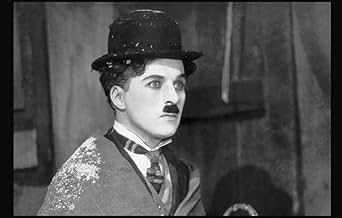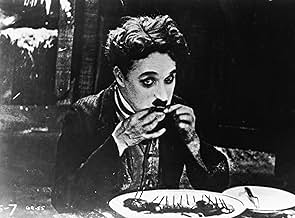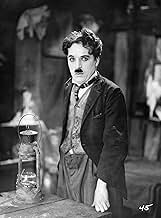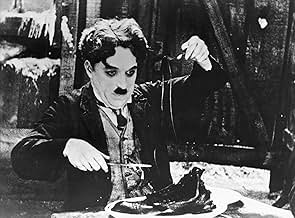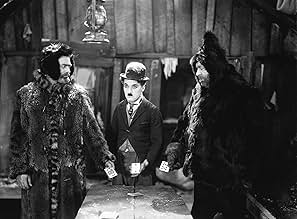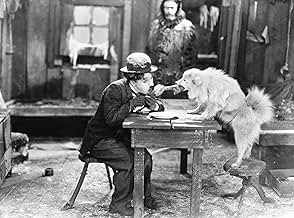ÉVALUATION IMDb
8,1/10
122 k
MA NOTE
Le célèbre assaut pour tout l'or de l'Oklahoma vu par l'un des maîtres du burlesque américain.Le célèbre assaut pour tout l'or de l'Oklahoma vu par l'un des maîtres du burlesque américain.Le célèbre assaut pour tout l'or de l'Oklahoma vu par l'un des maîtres du burlesque américain.
- Nommé pour 2 oscars
- 5 victoires et 3 nominations au total
Jack Adams
- Man in Dance Hall
- (uncredited)
Frank Aderias
- Eskimo Child
- (uncredited)
Leona Aderias
- Eskimo Child
- (uncredited)
Lillian Adrian
- Woman in Dance Hall
- (uncredited)
Sam Allen
- Man in Dance Hall
- (uncredited)
Claude Anderson
- Man in Dance Hall
- (uncredited)
Harry Arras
- Man in Dance Hall
- (uncredited)
Albert Austin
- Prospector
- (uncredited)
F.J. Beauregard
- Man in Dance Hall
- (uncredited)
Marta Belfort
- Woman in Dance Hall
- (uncredited)
William Bell
- Man in Dance Hall
- (uncredited)
Francis Bernhardt
- Man in Dance Hall
- (uncredited)
Histoire
Le saviez-vous
- AnecdotesSir Charles Chaplin stated that this was the film by which he most wanted to be remembered.
- GaffesWhen Big Jim is delirious and thinks The Lone Prospector is a chicken, The Lone Prospector removes a knife from the table and hides it in the bed. In one of the next shots, the knife is back on the table. Then in the next shot, it is gone again.
- Autres versionsThere is a 1942 re-issue version, prepared by Charles Chaplin himself, which uses his own narration, music score, and editing (running time: 72 minutes). This version is the only one which has its copyright owned by the Chaplin Film company. Many scenes of the 1942 version derived from an alternate camera that was shooting simultaneously. This explains some of the very slight differences in camera angle, although Chaplin also deleted some footage in order to tighten the pacing (such as Big Jim and the Tramp's near-encounter in the Gold Rush town and the shot of a woman comforting another woman during the singing of "Auld Lang Syne".
- ConnexionsEdited into Werner Herzog Eats His Shoe (1980)
Commentaire en vedette
Charles Chaplin's "The Gold Rush" is arguably his finest film. He stars as a wimpy prospector who decides to go to the Klondike in the hopes of striking it rich. What he does not realize is that he may find love (in the form of Georgia Hale) instead of money. In the end that may be all right with him. "The Gold Rush" shows everything that made Charles Chaplin the great performer, writer and director he was. Quite possibly the finest cinematic icon of the 20th Century, Chaplin showed humanity, love and an undying want to entertain all audiences throughout his stellar cinematic career. The movie is exceptional in every way. Although I am not as well-versed with movies from the 1920s as I am with the decades following it, I would still probably call "The Gold Rush" the finest film of that 10-year period. Oh how the cinema misses Charles Chaplin today. 5 stars out of 5.
- tfrizzell
- 6 nov. 2003
- Lien permanent
Meilleurs choix
Connectez-vous pour évaluer et surveiller les recommandations personnalisées
- How long is The Gold Rush?Propulsé par Alexa
Détails
- Date de sortie
- Pays d’origine
- Sites officiels
- Langues
- Aussi connu sous le nom de
- The Gold Rush
- Lieux de tournage
- société de production
- Consultez plus de crédits d'entreprise sur IMDbPro
Box-office
- Budget
- 923 000 $ US (estimation)
- Brut – à l'échelle mondiale
- 31 490 $ US
- Durée1 heure 35 minutes
- Couleur
- Mixage
- Silent(original release)
- Rapport de forme
- 1.33 : 1
Contribuer à cette page
Suggérer une modification ou ajouter du contenu manquant

Lacune principale
By what name was La ruée vers l'or (1925) officially released in India in English?
Répondre

